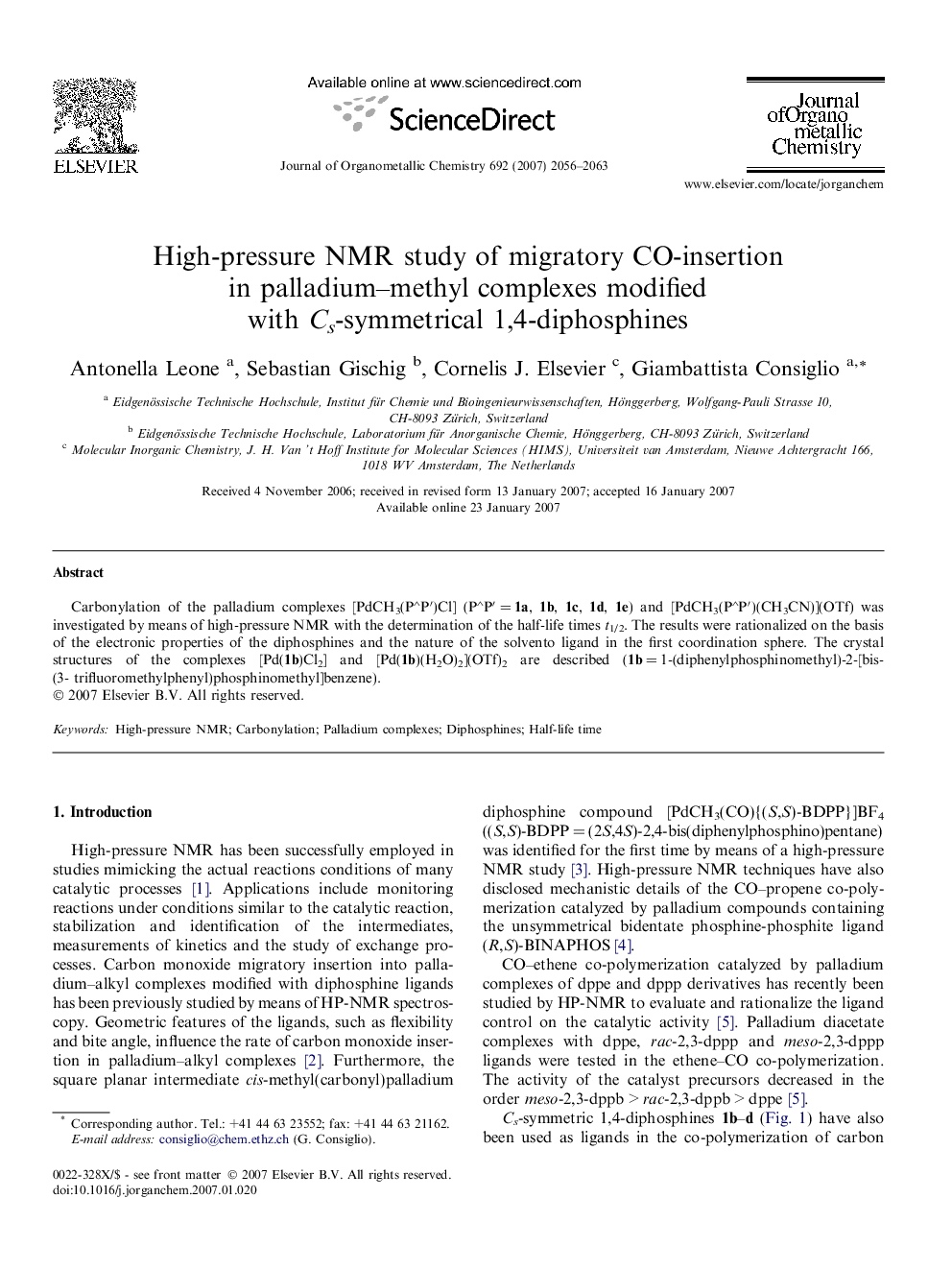| Article ID | Journal | Published Year | Pages | File Type |
|---|---|---|---|---|
| 1325496 | Journal of Organometallic Chemistry | 2007 | 8 Pages |
Carbonylation of the palladium complexes [PdCH3(P∧P′)Cl] (P∧P′ = 1a, 1b, 1c, 1d, 1e) and [PdCH3(P∧P′)(CH3CN)](OTf) was investigated by means of high-pressure NMR with the determination of the half-life times t1/2. The results were rationalized on the basis of the electronic properties of the diphosphines and the nature of the solvento ligand in the first coordination sphere. The crystal structures of the complexes [Pd(1b)Cl2] and [Pd(1b)(H2O)2](OTf)2 are described (1b = 1-(diphenylphosphinomethyl)-2-[bis(3- trifluoromethylphenyl)phosphinomethyl]benzene).
Graphical abstractCarbonylation of the palladium complexes [PdCH3(P∧P′)Cl] (P∧P′ = 1a, 1b, 1c, 1d, 1e) and [PdCH3(P∧P′)(CH3CN)](OTf) was investigated by means of high-pressure NMR with the determination of the half-life times t1/2. The results were rationalized on the basis of the electronic properties of the diphosphines and the nature of the solvento ligand in the first coordination sphere. The crystal structures of the complexes [Pd(1b)Cl2] and [Pd(1b)(H2O)2](OTf)2 are described (1b = 1-(diphenylphosphinomethyl)-2-[bis(3- trifluoromethylphenyl)phosphinomethyl]benzene).Figure optionsDownload full-size imageDownload as PowerPoint slide
